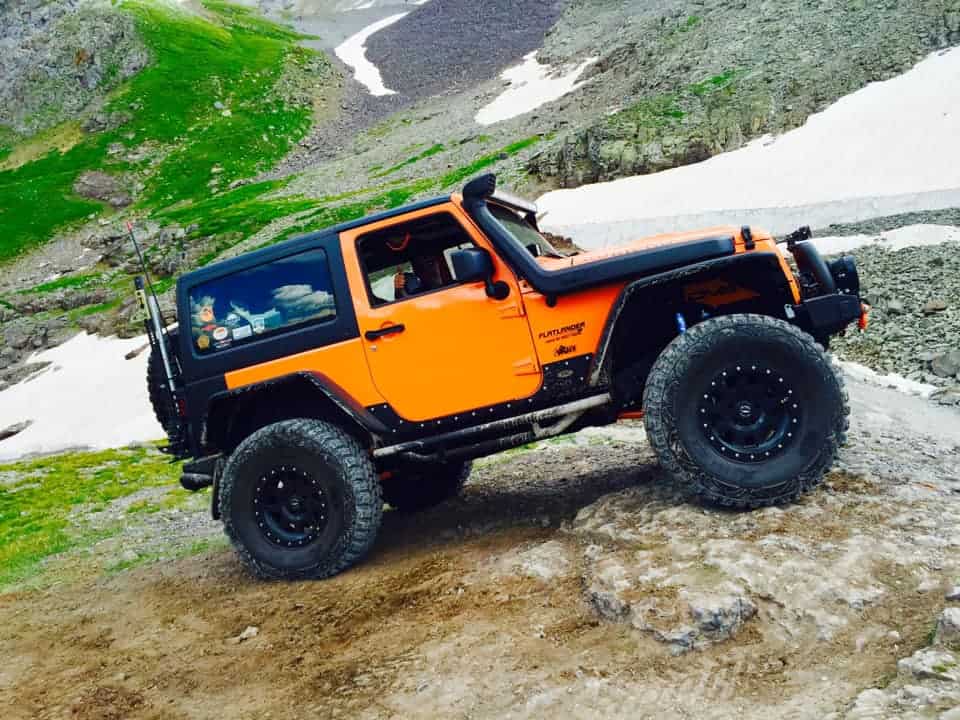So you have your Jeep and you want bigger tires. But, you have no idea where to start and the more you look into the issue, you are bombarded with an overwhelming amount of information about things you had no idea you needed to be concerned about.
We’re here to take the guesswork out choosing tires and wheels and give you a clear guide to what you should be looking for when picking your combo. Keep in mind we aren’t choosing your setup for you but giving you the information to make your choice more informed. Let the adventure begin!
Start With a Goal
Building your Jeep can go in several ways. Some people like to build their Jeep up gradually and run different setups along the way. Other people like to save up and just get the end product the first time and skip all of the in-between stages.
Whatever your process is, you need to have a clearly defined goal as to what you are wanting to achieve.
If you are one who will be gradually building up and know you will be running different setups, that’s great as long you know exactly what your next step is.
If you are saving up for the big build and going all in at once, that’s fine also. Just know that your process and choosing equipment is going to look very different than the guy building in stages.
When it comes to tires and wheels, its all about fitting your current situation. Like shopping for shoes, you wouldn’t go buy track cleats for basketball season or dress shoes to run a marathon.
Tires and wheels are the shoes for your Jeep and you have to shop for the right situation.
Don’t rush in thinking you just want to run bigger tires without knowing what you should have to properly wear those shoes.
To start, let’s take a look at the wheels and what you should consider before we look at tires to sit on those wheels. We find that when choosing wheels, more so than tires, it’s better to look as far into the future as possible.
Steel or Alloy
The journey of a thousand miles starts with a single step. This is that step. Your Jeeps journey and all the memories you are going to make along the way starts with choosing how you plan to get there.
This step starts with what wheels are you going to use to hold your tires that will carry you over earth’s terrain. Going one step further in, what metal are those wheels going to be made of?
Choosing between steel or alloy wheels is like laying the foundation of a house. You rely heavily on your wheels and steel and alloy both have their pros and cons.
So what’s the difference between steel wheels and alloy wheels?
When you think you of steel you probably think of strong sturdy American grit and sweat that can take and give a beating. If someone offers you a flimsy sheet metal or solid piece of good ole steel, chances are you’re going to choose the steel.
For years this has been the case. You want something that can just take a beating and be fine and not have to worry about it.
When choosing wheels for your Jeep this sounds perfect. Steel wheels are cheap to make and therefore less expensive.
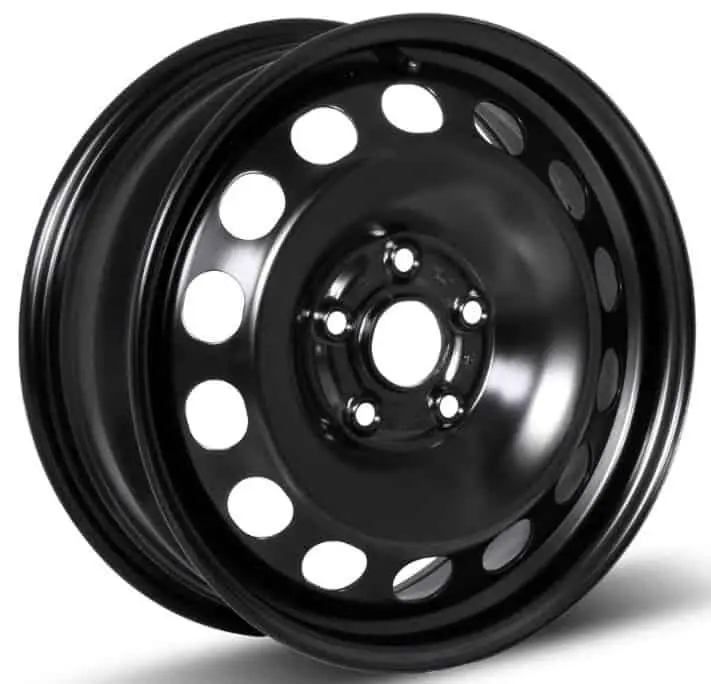
Steel can be easily painted and worked on to fix any imperfections. Steel wheels are resilient and can take lots of abuse and wear that comes with off-roading (especially rock crawling).
So if everything is so great and perfect for off-road scenarios, why is there any hold up to choosing steel for your wheel choice? Because steel is heavy and weight is a big consideration on the trail.
So what is the alternative to steel that doesn’t weight that much? Enter stage right…alloy wheels.
Alloy metals are simply a mixture of metals that take characteristics of each parent metal to form a child with the best qualities of each. In our case, alloy wheels are usually a combination of aluminum and magnesium.
The biggest advantage to an alloy wheel set up is a significant reduction in weight. Because alloy wheels are porous they are lighter than steel wheels and can help your Jeep shed some pounds on the scale.
On top of being lighter, alloy wheels are often the choice when wanting a unique design as they come in better different forms and looks for full customization of your Jeep.
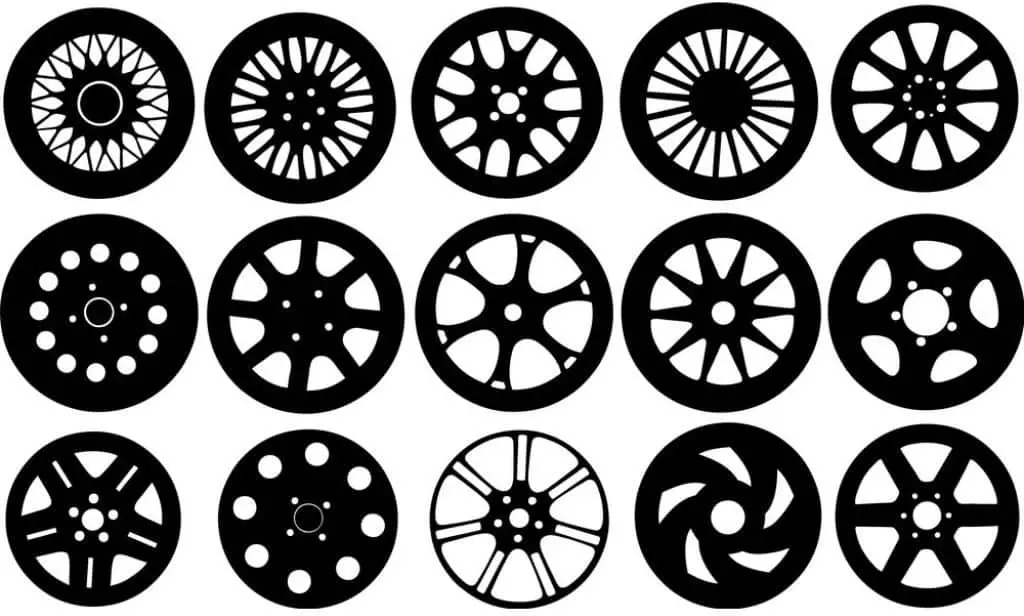
Usually alloy wheels come either in cast alloy or forged alloy choices. While both are more expensive than steel, forged alloy is even more pricey than cast.
With that price comes an even lighter product. Forged alloy wheels require a much more labor intensive process than making steel wheels and therefore cost more.
Forged alloy wheels are definitely stronger than cast alloy, but neither are as strong as steel. On top of that, neither are as easily fixable as steel wheels.
If you are careful and considerate driver off-road, this might not be an issue for you as you know you aren’t just banging your rims on rocks for the heck of it. But accidents do happen.
Because alloy wheels are so much lighter than steel, they allow for easier maneuvering on the trail and light rolling mass. Alloy wheels are also less prone to dents and dings as steel but instead display scrapes and scratches.
There are pros and cons to both wheel choices. And ultimately it comes down to your taste and style. Sometimes it takes experimenting with both to really know what you like.
If that’s the case check with someone who has steel wheels and someone with alloy and see if they’ll let you drive and test them out. Everyone has their own opinion but only you can decide what your opinion is.
To Beadlock or Not to Beadlock?
To answer this question, you first need to understand what a beadlock wheel is and what it does.
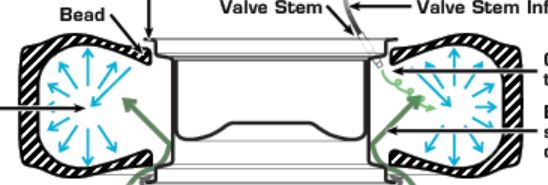
The bead of a tire is the rim/edge of a tire that sits on the wheel. When off-roading, it is often better to run your tires at an extremely low PSI in order to get a larger foot print on the surface you are traveling.
This comes in particularly handy when climbing on slick rocks. However, if you run too low of a PSI on a normal rim, you run the risk of “losing your bead” as it is the pressure in the tire that holds it to the rim.
When on the trail, it can be extremely hard to seat a tire onto a rim without the proper equipment.
This is where a beadlock rim comes in handy. A beadlock functions differently from a normal rim by literally bolting a ring around the bead of the tire and “locking” into place.
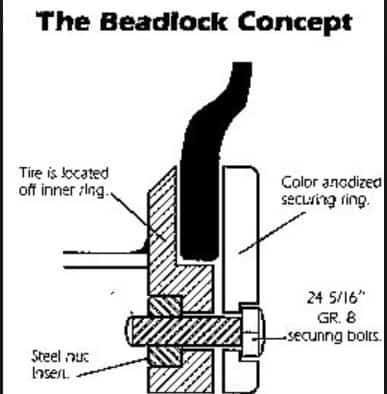
There are fake bead lock rims on the market that are designed to make it look like you are running true beadlocks. Make sure if you are shopping for this kind of wheel that you are getting a true beadlock and not a look-a-like.
This set up allows you to essentially run as low of PSI you want without worrying of losing a bead or your tire coming off of the rim.
Do to this functionality of being able to run “flat tires”, beadlocks are sold as OFF ROAD USE ONLY. A scenario that would cause hesitation for street use would be the fact that a law enforcement spike strip wouldn’t necessarily work on a bead locked tire.
Therefore, if you are considering beadlock wheels, you need to be aware of your local laws and what is allowed for street use. Siberian 4×4 does not take any responsibility or assume any risk in your decision to run or not run beadlock wheels on your car.
Beadlock wheels balance and operate differently than a normal wheel. You’ll learn quickly that many commercial tire installers will not install tires onto a beadlock rim due to legal liability.
If you want to run beadlocks on your Jeep, make sure you are aware of how to install and balance them or know someone who will help you.
If you choose to run normal wheels, be aware of the lowest PSI you can safely operate at. There are plenty of trails and off-road events you can attend without being able to pressure down your tires as low those with beadlock wheels.
However, there are limitations to tire pressure on a normal rim and you should always operate within the factory standards of that rim.
Rock, Mud, or All-Terrain
This decision is a relatively easy one because it comes down to where you driving your Jeep and how often.
If you plan on any street driving on a regular basis, the most logical choice is to find one of the many all terrain tire options out there.
All-terrain tires are nice balance of off-road capability and on-road noise reduction and performance. There are many brands that offer extremely capable all-terrain choices that still give your Jeep that aggressive off-road look you probably are wanting.
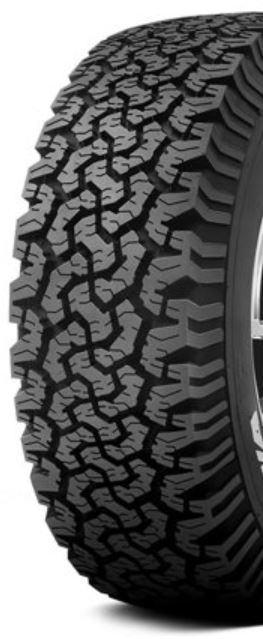
Head over to our Recommended Products page to see our choices for tire options!
As their name implies, rock and mud terrain tires are designed specifically for those relative environments.
You’ll find that mud terrain tires have an extremely aggressive and deep tread that is designed to dig into the mud and at the same time not get clogged up and be slippery and useless.
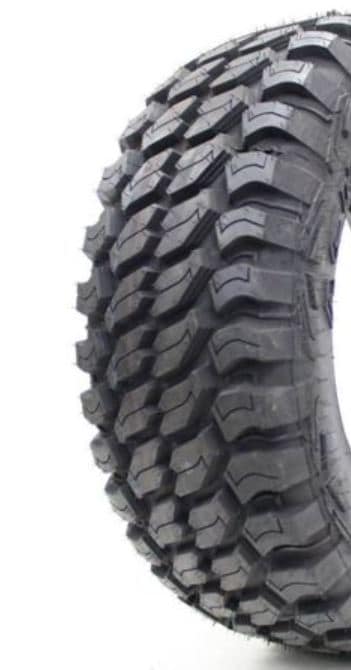
On the other hand, rock tires are still extremely aggressive but made with a different tread pattern and tire compound that allows them to be extremely sticky and thus better equipped to grip onto smooth rock surfaces.
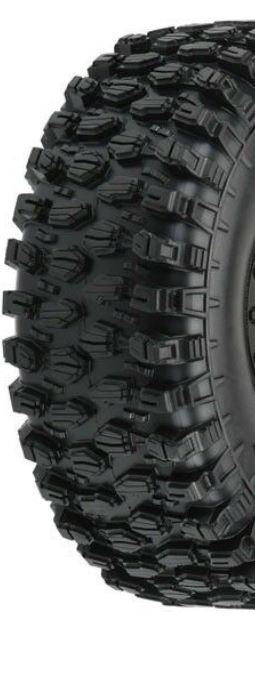
It is important to know that excessive road use of tires that are specifically designed for off-road functions will reduce the mileage you get out of those tires. So be sure to go with an All-Terrain if you do lots of street driving.
Wheel and Tire Compatibility
There is a wide range of rim sizes to accommodate the size tire you choose. The key is to find the right compatibility between your wheels and tires.
Before settling in on a wheel size, there is some things that need to be determined. First of which is a for sure decision on what tire size you want to run.
Your tire choice will have wheel specifications with which it best operates. In order to get the best performance from your tires, they need to be installed on compatible rims.
For instance, you wouldn’t want to run 40″ tires on a 15″ rim. Why you ask? Well as you increase in tire size, your need to increase the rim size stems from the need for easier maneuverability.
If you had a 40″ tire on a 15″ rim, you would be trying to turn and maneuver a whole lot of rubber and mass with a small about of center section called your wheel.
As you cross the threshold of 35″ tires and above, the minimum size rim you would want to run is 17 inches.
While rim diameter is specifically marked on tires and set in stone as to what size rim that tire needs, rim width is a little more flexible as to what you want.
There are some guidelines to keep in mind though. First of which is to make sure you are in the factory recommended range of rim widths. Within that range, things are pretty open.
The narrower the rim, the narrower the tire will sit and therefore less contact with the ground. The wide the rim, the fatter the tire can sit and therefore more contact with the ground.
While you might be tempted to think going super wide and flat with your tire is the best choice, your ideal width would line up with the tires MRW (measuring rim width) which is the basis for the section width specification.
Going to either extreme of real narrow or real wide isn’t ideal. The range of widths given for the tires rim width though is provided for a reason.
That reason being that if your tire rubs or not can be the difference of an inch or so in rim width. So by adjusting rim width within that range provided, you can prevent tires rubbing on your vehicle.
Putting it All Together
As we’ve said time and time again, what you choose to put on your Jeep usually directly impacts some other aspect of your vehicle’s modification.
Tires and wheels are no different. Depending on what size tires you choose determines what wheel you need. What lift, fender, and axle modifications you have determines what backspacing you might need on that wheel or the other way around.
There is never a straight forward answer that solves everyone’s dilemma in the world of off-road modifications. But there is the option to educate yourself on how all of things come together to form a fully functioning machine that can conquer anything.
But to wrap up our guide to choosing the best “shoes” for your Jeep here is a brief summary.
- Have your current end goal in mind and know what you are trying to achieve with your tire size selection.
- With your end goal in mind, find the appropriate size wheels for your tire choice. Keep in mind the range of width you need to be within and that larger diameter tires operate better on larger diameter rims. Make sure to do your research on what backspacing your particular Jeep’s setup is going to require.
- Once you know your sizes, decide on steel or alloy wheels. Steel rims are a Jeep classic that can take a beating and are easy to make and repair but weigh a lot and have few design options. Alloy wheels are more expensive and harder to make and repair but have loads of custom options and are far lighter.
- Beadlock wheels ensure you won’t lose a bead (tire coming off rim) when airing down to low PSI out on the trail. However, beadlocks are sold as OFF ROAD USE ONLY so install at your own risk for street driving.
- Lastly, tires have four basic tread designs, three of which most Jeepers are worried about. All terrain tread is an all round tread that is “average” for all conditions. Mud terrain tires are deep grooved and designed to dig into the mud and not get clogged. Rock tread is designed to conform around rock surface and made from sticky compound for ultimate traction.
Keeping these things in mind will help ensure you are running the optimum setup for your off-road needs and desires. Whatever your obstacle, make sure you are properly fitted for the situation and keep the wilderness on YOUR side.

